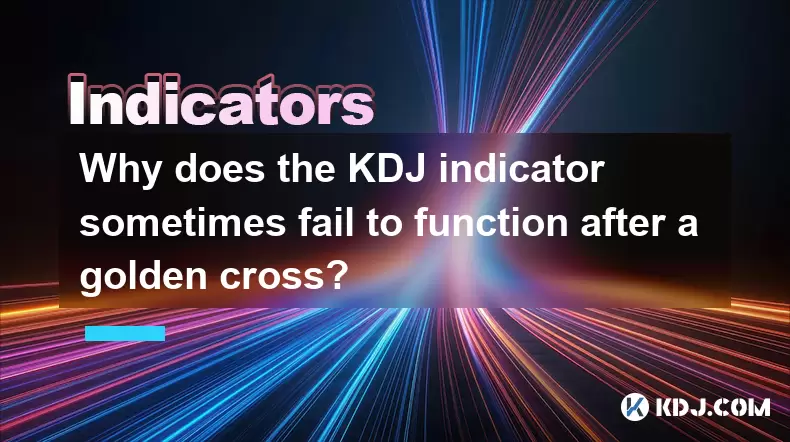-
 Bitcoin
Bitcoin $115100
-1.30% -
 Ethereum
Ethereum $4758
-1.70% -
 XRP
XRP $3.027
-2.19% -
 Tether USDt
Tether USDt $0.9998
-0.01% -
 BNB
BNB $883.2
-1.42% -
 Solana
Solana $204.0
2.62% -
 USDC
USDC $1.000
0.02% -
 Dogecoin
Dogecoin $0.2371
-0.97% -
 TRON
TRON $0.3612
-1.24% -
 Cardano
Cardano $0.9128
-2.19% -
 Chainlink
Chainlink $26.13
-3.93% -
 Hyperliquid
Hyperliquid $44.73
0.90% -
 Sui
Sui $3.715
-0.56% -
 Stellar
Stellar $0.4153
-2.41% -
 Ethena USDe
Ethena USDe $1.000
-0.04% -
 Bitcoin Cash
Bitcoin Cash $588.9
-2.06% -
 Avalanche
Avalanche $25.91
3.27% -
 Hedera
Hedera $0.2525
-1.45% -
 Litecoin
Litecoin $120.9
-1.35% -
 UNUS SED LEO
UNUS SED LEO $9.607
0.30% -
 Toncoin
Toncoin $3.382
-0.31% -
 Shiba Inu
Shiba Inu $0.00001329
-0.38% -
 Uniswap
Uniswap $11.38
-1.67% -
 Polkadot
Polkadot $4.222
2.83% -
 Aave
Aave $354.5
4.93% -
 Dai
Dai $0.0000
0.00% -
 Bitget Token
Bitget Token $4.704
-1.49% -
 Cronos
Cronos $0.1565
1.83% -
 Ethena
Ethena $0.7463
1.55% -
 Monero
Monero $265.8
-0.39%
Why does the KDJ indicator sometimes fail to function after a golden cross?
The KDJ golden cross can signal bullish momentum, but in volatile crypto markets, it often produces false signals without confirmation from volume, RSI, or trend analysis.
Aug 13, 2025 at 11:35 am

Understanding the KDJ Indicator and Its Components
The KDJ indicator is a momentum oscillator widely used in cryptocurrency trading to identify overbought and oversold conditions. It consists of three lines: the %K line, the %D line, and the %J line. The %K line is the fastest and represents the current closing price relative to the price range over a specified period, typically 9 periods. The %D line is a moving average of %K, making it smoother, while the %J line is a derivation of %K and %D, often used to detect extremes. A golden cross occurs when the %K line crosses above the %D line from below, usually interpreted as a bullish signal. However, despite its popularity, the KDJ does not always deliver reliable results post-cross, especially in volatile crypto markets.
Market Volatility and Cryptocurrency Price Behavior
Cryptocurrency markets are known for their high volatility, which can distort the signals generated by technical indicators like the KDJ. During sharp price swings, the indicator may generate a golden cross based on a temporary rebound, only for the price to reverse immediately afterward. This happens because the KDJ relies on historical price data, and rapid price changes can create false signals. For example, a sudden pump followed by a dump may cause the %K line to cross %D, suggesting bullish momentum, while the underlying trend remains bearish. In such scenarios, the golden cross becomes a lagging signal, failing to anticipate the true market direction.
Timeframe Sensitivity and Parameter Settings
The effectiveness of the KDJ indicator is highly dependent on the selected timeframe and parameter configuration. Most default settings use a 9-period lookback, but this may not suit all trading strategies or market conditions. On shorter timeframes like 5-minute or 15-minute charts, the KDJ can generate frequent golden crosses due to noise, many of which lead to failed trades. Conversely, on longer timeframes like daily or weekly, the signal may be delayed, missing optimal entry points. Traders must adjust the KDJ parameters (e.g., 9, 3, 3) to align with their trading style. For instance:
- Use a longer period (e.g., 14) to reduce false signals in highly volatile altcoins.
- Apply a smoothing factor to the %D line to filter out erratic movements.
- Combine with volume analysis to confirm whether the golden cross is supported by actual buying pressure.
Lack of Confirmation from Other Indicators
Relying solely on the KDJ golden cross without cross-verification from other tools increases the risk of failure. The crypto market often moves based on external factors such as news, whale activity, or exchange inflows, which technical indicators cannot capture. To improve accuracy:
- Check if the Relative Strength Index (RSI) is exiting oversold territory, supporting the bullish signal.
- Observe Moving Averages (MA) — a golden cross is more reliable when price is above the 50-day or 200-day MA.
- Monitor MACD for bullish crossover confirmation.
- Look for support levels on the price chart aligning with the KDJ signal.
When these additional conditions are absent, the KDJ golden cross may indicate a temporary bounce rather than a sustainable uptrend, leading to failed trades.
Whale Manipulation and Fakeouts in Crypto Markets
The decentralized and largely unregulated nature of cryptocurrency markets makes them susceptible to whale manipulation. Large holders can trigger price movements designed to trap retail traders. For example, a whale may push the price up slightly to generate a KDJ golden cross, enticing traders to buy, then immediately dump their holdings, causing the price to collapse. This creates a fake bullish signal. Such manipulation is especially common in low-liquidity altcoins. To mitigate this risk:
- Focus on high-market-cap cryptocurrencies like Bitcoin or Ethereum, where manipulation is harder.
- Analyze order book depth to detect large sell walls appearing after a golden cross.
- Use on-chain data (e.g., exchange inflows/outflows) to assess whether buying pressure is genuine.
- Avoid entering trades immediately after a golden cross; wait for candlestick confirmation, such as a strong bullish candle closing above key resistance.
How to Improve KDJ Signal Reliability in Crypto Trading
To reduce the failure rate of KDJ golden crosses, traders should implement a multi-layered analysis approach. This involves combining the KDJ with other forms of technical and on-chain analysis. Steps to enhance signal accuracy include:
- Wait for the %J line to rise above 0 after the golden cross, indicating increasing momentum.
- Ensure the cross occurs in oversold territory (below 20), increasing the likelihood of a real reversal.
- Confirm with volume spikes — a golden cross accompanied by rising volume is more trustworthy.
- Apply the KDJ on multiple timeframes — a golden cross on both 1-hour and 4-hour charts carries more weight.
- Use trendlines or Fibonacci retracement levels to assess whether the cross aligns with key technical zones.
By integrating these practices, traders can filter out weak signals and focus on high-probability setups.
Frequently Asked Questions
Can the KDJ indicator be used effectively in sideways crypto markets?
Yes, the KDJ performs well in ranging markets because it excels at identifying overbought and oversold levels. In sideways conditions, the golden cross near the 20 level and the death cross near the 80 level can offer reliable reversal signals. However, traders should confirm the market is truly range-bound by using tools like Bollinger Bands or ADX below 20 to avoid false interpretations during weak trends.
Why does the KDJ sometimes show a golden cross even when the price is declining?
This occurs due to short-term price bounces within a downtrend. The KDJ measures momentum over a fixed period, so a minor upward move can trigger a cross even if the overall trend is down. This is known as a bullish divergence, but without volume support or trend reversal confirmation, it often fails. Always check the higher timeframe trend before acting.
Is it better to use KDJ on candlestick or Heikin-Ashi charts?
The standard candlestick chart is preferable for KDJ analysis because it reflects real price action. Heikin-Ashi smooths price data, which can delay or distort KDJ signals. For example, a golden cross on Heikin-Ashi might appear later than on a regular chart, reducing its effectiveness for timely entries.
How can I automate KDJ golden cross alerts in crypto trading platforms?
Most trading platforms like TradingView allow custom alert setups. To create a KDJ golden cross alert:
- Open the KDJ indicator on your chart.
- Click "Alerts" and set the condition:
%K crosses above %D. - Add filters such as
%K < 20to focus on oversold conditions. - Choose notification methods (email, SMS, pop-up).
- Test the alert in a demo environment before live trading.
Disclaimer:info@kdj.com
The information provided is not trading advice. kdj.com does not assume any responsibility for any investments made based on the information provided in this article. Cryptocurrencies are highly volatile and it is highly recommended that you invest with caution after thorough research!
If you believe that the content used on this website infringes your copyright, please contact us immediately (info@kdj.com) and we will delete it promptly.
- XYZVerse, Shiba Inu, and the 2025 Bull Cycle: A Meme Coin Evolution
- 2025-08-24 13:05:12
- WLFI Token, BingX, and the Trading Landscape: A New York Perspective
- 2025-08-24 12:45:20
- Aave, Governance, Allocation: Navigating DeFi's Shifting Sands
- 2025-08-24 12:45:20
- Crypto Coins in 2025: Meme Coins, Undervalued Blockchains, and Bull Run Predictions
- 2025-08-24 13:05:12
- Fed Pivot Ignites Crypto Rally: Altcoins Set to Outperform?
- 2025-08-24 13:25:12
- Eric Trump, Tokyo, and Metaplanet: A Bitcoin Bonanza?
- 2025-08-24 11:05:13
Related knowledge

What does it mean when the +DI and -DI cross frequently in the DMI indicator but the ADX is flattening?
Aug 11,2025 at 03:15am
Understanding the DMI Indicator ComponentsThe Directional Movement Index (DMI) is a technical analysis tool composed of three lines: the +DI (Positive...

What does the sudden appearance of a "dark cloud cover" candlestick pattern during an uptrend indicate?
Aug 13,2025 at 11:35am
Understanding the 'Dark Cloud Cover' Candlestick PatternThe dark cloud cover is a bearish reversal pattern in technical analysis that typically appear...

What does it mean when the moving average, MACD, and RSI all send buy signals simultaneously?
Aug 11,2025 at 01:42pm
Understanding the Convergence of Technical IndicatorsWhen the moving average, MACD, and RSI all generate buy signals at the same time, traders interpr...

What does it mean when both the KDJ indicator and the RSI show overbought signals simultaneously?
Aug 13,2025 at 11:35am
Understanding the KDJ Indicator in Cryptocurrency TradingThe KDJ indicator is a momentum oscillator derived from the Stochastic Oscillator, widely use...

What does it mean when the price is trading above the SAR indicator but the red dots are densely packed?
Aug 09,2025 at 11:49pm
Understanding the SAR Indicator and Its Visual SignalsThe SAR (Parabolic Stop and Reverse) indicator is a technical analysis tool used primarily to de...

What does it mean when the candlestick chart forms a "Morning Star" but trading volume is sluggish?
Aug 12,2025 at 06:28pm
Understanding the Morning Star Candlestick PatternThe Morning Star is a three-candle bullish reversal pattern commonly observed in cryptocurrency pric...

What does it mean when the +DI and -DI cross frequently in the DMI indicator but the ADX is flattening?
Aug 11,2025 at 03:15am
Understanding the DMI Indicator ComponentsThe Directional Movement Index (DMI) is a technical analysis tool composed of three lines: the +DI (Positive...

What does the sudden appearance of a "dark cloud cover" candlestick pattern during an uptrend indicate?
Aug 13,2025 at 11:35am
Understanding the 'Dark Cloud Cover' Candlestick PatternThe dark cloud cover is a bearish reversal pattern in technical analysis that typically appear...

What does it mean when the moving average, MACD, and RSI all send buy signals simultaneously?
Aug 11,2025 at 01:42pm
Understanding the Convergence of Technical IndicatorsWhen the moving average, MACD, and RSI all generate buy signals at the same time, traders interpr...

What does it mean when both the KDJ indicator and the RSI show overbought signals simultaneously?
Aug 13,2025 at 11:35am
Understanding the KDJ Indicator in Cryptocurrency TradingThe KDJ indicator is a momentum oscillator derived from the Stochastic Oscillator, widely use...

What does it mean when the price is trading above the SAR indicator but the red dots are densely packed?
Aug 09,2025 at 11:49pm
Understanding the SAR Indicator and Its Visual SignalsThe SAR (Parabolic Stop and Reverse) indicator is a technical analysis tool used primarily to de...

What does it mean when the candlestick chart forms a "Morning Star" but trading volume is sluggish?
Aug 12,2025 at 06:28pm
Understanding the Morning Star Candlestick PatternThe Morning Star is a three-candle bullish reversal pattern commonly observed in cryptocurrency pric...
See all articles

























































































